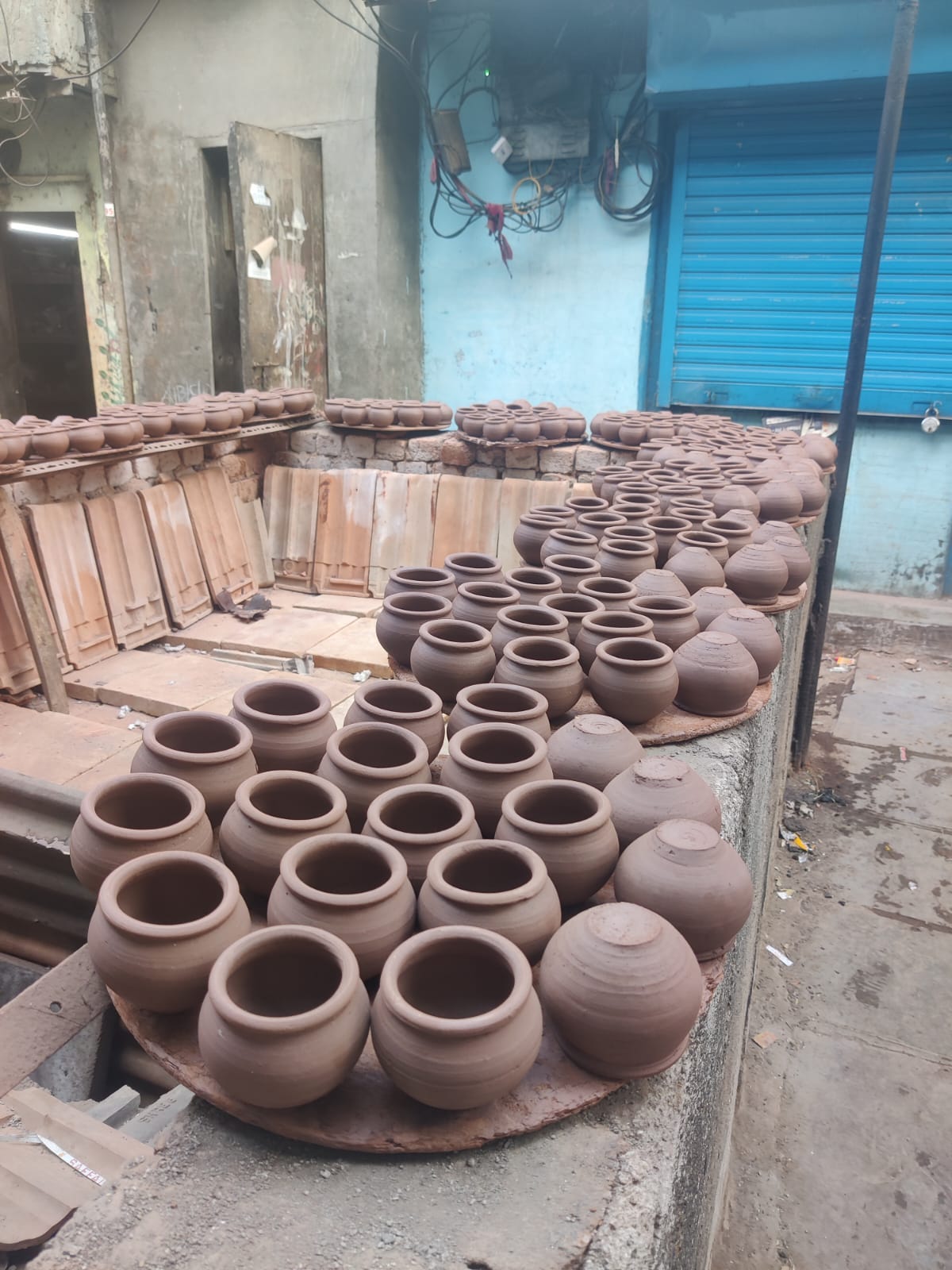What comes to your mind when you hear the word Dharavi? A huge area of overcrowded houses with poverty on full display and where you should not venture alone? A slumdog millionaire portrait? A dirty residential area?
I thought all of these. I was ambivalent about visiting Dharavi slum, but my curiosity overtook my fears. And so I stood, waiting at the Mahim railway station for my tour guide from Reality tours and Travels. I came to know about the group through a random Mumbai blogpost where they mentioned that 80% of the booking fees goes to their NGO of Reality gives, teaching the slum kids professional skills.It was an easy choice to make.
But I was not prepared for what I was going to witness - the chaos, the contrast and the crowd of Dharavi inspiring reverence in my privileged shielded heart. I was joined by two other people - A Delhiite and an American. The diversity made for a good range of questions and perspectives as our guide shared the stories behind the semblance of a city. The name Dharavi came from Tamil language which refer to Shiva as Dhareshwar. The old Shiva temple still stands in the middle of Dharavi, which was once the edge of Bombay, a city of seven islands.
I always thought Dharavi is the largest slum in the world. It is not even the largest in Asia, that title goes to Orangi slum in Pakistan, near Karachi. Interesting how superlatives simplify our understanding of new places.
But for factual understanding, there are 1.6 million people in an area of 2.3 km square.
But it was not the density of the people or the extent of the poverty which surprised me - it was the industriousness.
Dharavi has over 10k small scale industries generating over 650 million US dollars!
Let that sink in.
I was not even remotely aware of the work that is being done in the slum. And we started with that - wandering along lanes of shops recycling plastic to pellets, making luggage bags, recycling aluminium coke cans to juicer-mixer parts, building crushing machines, stitching clothes, dyeing fabrics, baking puff pastries, cardboards, the list is very long.. A lot of the workers were migrant men who slept in the shop itself, saving on the extravagant Mumbai rent. The families lived on the first and second floors with shops on the ground floor. The workers are paid very less- like approximately 40 Rs per garment they make. And it was visible in the speed and focus with which they worked, barely looking at us, as we stood outside. Although the kids roamed around freely, hi-fived us with enthusiasm.
We navigated lanes so narrow that we had to use flashlight to see what’s ahead, with low hanging wires. The staircases were very steep and I wondered if a bicycle could pass through. A 30 square feet house with five residents is not an easy way to survive. The community toilets were outside the housing areas- there are around 1500 community toilets for 1 million people - not enough. We then moved to see the leather making units - the tanneries are in Kanpur and Chennai in India. Being from Kanpur, I was immediately curious about no stench - that’s when they shared that the tanning happens in either of the two cities. The pre and post processing of leather happens in Dharavi. My favorite part was a shop with the brand name Dharavi selling leather purses, shoes, belts etc. It was a great experience meeting the three generations of owners, who chose to give their company the name of the area and not their own. The word Dharavi still has a negative connotation in urban mindscape and they hope the high quality leather products would change it. I hope too, because this is not just a story of poverty but a land of survival. Of people hustling hard to make ends meet, of big dreams in small streets.
We walked through the pottery town - of Gujarati families which migrated long back but the culture is still visible in beautiful embroidered wall hangings and lots of saffron flags in the lanes.
The tour ended with a glimpse of the classroom of Reality Gives, where children are taught English, Computer skills and personality development for a meagre fee, making them ready for the world outside. We also saw the rehabiliation apartment for the slums, and Adani’s proposal. I read about how slum dwellers rent out their apartments and go back to living in the slums, it was accompanied by commentary on how hard it is to leave old habits. Yet the story was incomplete as I saw the real reason for unwillingness to move. Their businesses! They cannot operate the small businesses out of the flats given by the government, hence the rehabiliation project is still a failure in Dharavi .
I am too much of an outsider to comment on what would be the best way forward, but a way to keep that fire in the eyes of every Dharavi resident burning would be a good vision to hold onto. And delving a little deeper into the reality and truth of the place itself, a step I am glad I took :)






